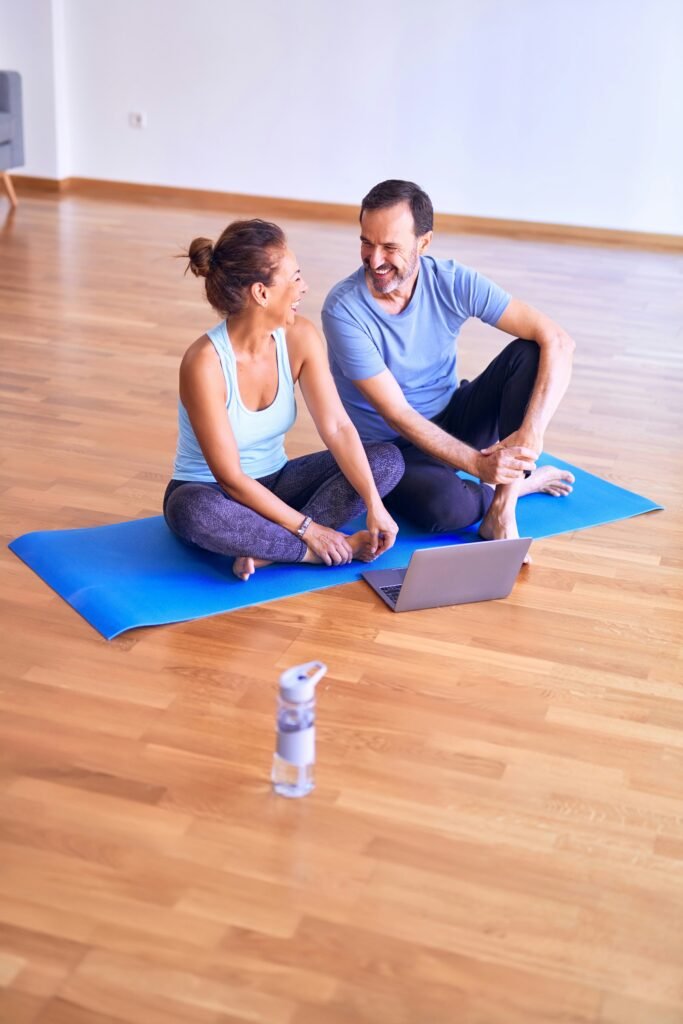
Welcome to “A Comprehensive Guide to Maintaining Fitness After 50!” In this article, you will find valuable information on how to stay active and healthy well into your golden years. From incorporating regular exercise routines to making smart dietary choices, you will discover practical tips and advice to help you maintain your fitness levels and overall well-being after turning 50. Stay tuned for expert guidance on how to stay strong, flexible, and energized as you navigate the aging process with grace and vitality.
A Comprehensive Guide to Maintaining Fitness After 50
Are you over 50 and looking to stay fit and healthy? Maintaining fitness as you age is crucial for your overall well-being. But sometimes, knowing where to start or what to focus on can be overwhelming. In this guide, we will provide you with a comprehensive overview of how to stay fit after 50, covering everything from the importance of staying active to crafting an effective workout routine that suits your needs and abilities.
Find more product like these on Amazon!
Why Fitness Matters After 50
Staying physically active as you age is essential for maintaining good health and quality of life. Regular exercise can help to prevent various chronic diseases, such as heart disease, diabetes, and osteoporosis. Additionally, staying fit can improve your overall mood, decrease stress levels, and boost your energy.
Understanding Your Fitness Needs
One of the first steps in maintaining fitness after 50 is understanding your body’s changing needs. As you age, your metabolism slows down, muscle mass decreases, and flexibility may decline. It’s crucial to tailor your fitness routine to address these changes and prevent injury.

This image is property of images.unsplash.com.
Crafting a Balanced Fitness Routine
When it comes to staying fit after 50, variety is key. A well-rounded fitness routine should include a mix of cardiovascular exercises, strength training, flexibility work, and balance exercises. This combination can help you improve your overall fitness, maintain a healthy weight, and reduce the risk of injury.
Incorporating Cardiovascular Exercises
Cardiovascular exercises, such as walking, cycling, swimming, or dancing, are crucial for maintaining a healthy heart and improving endurance. Aim for at least 150 minutes of moderate-intensity cardio each week, or 75 minutes of vigorous-intensity exercise. Don’t forget to warm up and cool down before and after your cardio sessions to prevent injury.

This image is property of images.unsplash.com.
Strength Training for Stronger Muscles
Strength training is vital for preserving muscle mass, increasing metabolism, and preventing age-related muscle loss. Include exercises like squats, lunges, push-ups, and bicep curls in your routine. Aim to strength train at least two to three times per week, focusing on all major muscle groups.
Maintaining Flexibility and Mobility
As we age, our joints tend to become stiffer, and our range of motion decreases. Stretching exercises can help improve flexibility, reduce the risk of injury, and enhance overall performance. Include stretches for all major muscle groups in your routine and hold each stretch for 15-30 seconds.

This image is property of images.unsplash.com.
Enhancing Balance and Coordination
Improving balance and coordination is crucial for preventing falls and maintaining independence as you age. Incorporate exercises like tai chi, yoga, or balance drills into your routine to enhance stability and reduce the risk of injury. Practicing standing on one leg or heel-to-toe walking can also help improve balance.
The Importance of Nutrition
Staying fit after 50 also involves paying attention to your nutrition. A balanced diet rich in fruits, vegetables, whole grains, lean proteins, and healthy fats can help fuel your workouts, boost your immune system, and support overall health. Stay hydrated, limit processed foods, and pay attention to portion sizes to maintain a healthy weight.
Listening to Your Body
As you age, it’s essential to listen to your body and adjust your fitness routine accordingly. Pay attention to any aches, pains, or discomfort during exercise and modify or seek professional help when needed. Remember, it’s okay to take rest days when your body needs time to recover.
Setting Realistic Goals
Setting achievable goals is crucial for staying motivated and tracking your progress. Whether it’s completing a 5K run, increasing your flexibility, or losing a few pounds, set specific, measurable goals that align with your fitness level and lifestyle. Celebrate your achievements along the way to stay motivated.
Finding a Support System
Staying fit after 50 can be more enjoyable and sustainable with the support of others. Consider joining a fitness class, hiring a personal trainer, or exercising with a friend to stay accountable and motivated. Surrounding yourself with like-minded individuals can make your fitness journey more rewarding.
Making Fitness a Lifestyle
Finally, maintaining fitness after 50 is all about making healthy choices a part of your lifestyle. Incorporate physical activity into your daily routine, make smart food choices, and prioritize self-care and rest. Remember, fitness is a journey, not a destination, so enjoy the process and celebrate your progress along the way. Stay active, stay healthy, and enjoy a fit and fulfilling life after 50.

